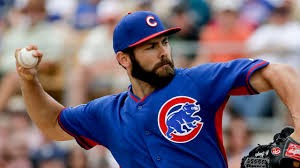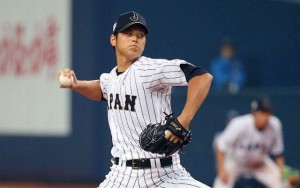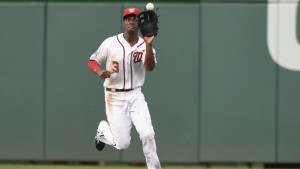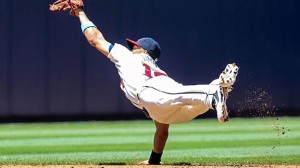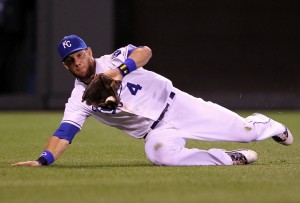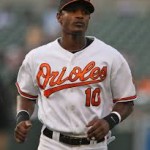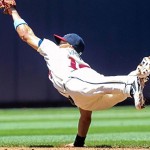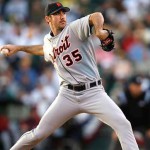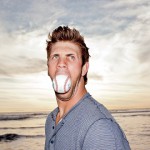We’re in a weird time in baseball. The players drastically misplayed their hand in the last couple of CBA negotiations, allowing the luxury tax to become so penurious that it now basically functions as a hard cap … but without the corresponding hard floors that would prevent the wholesale tanking we’ve been seeing lately. This has resulted (along with a couple other factors) in the worst FA market we’ve seen since the days of collusion.
I thought i’d do a little noodling to see just how bad this problem is.
Taking a quick look at 2017 off-season spending patterns and looking at the general activities of teams, here’s what seems to be going on:
Trying and Spending Big
- Boston: not really a surprise that they’re spending money, with more just announced with J.D. Martinez. The Boston-NYY wars are back on.
- New York Yankees: obviously trying … not necessarily “spending” a ton of money on the FA market but spent a ton to acquire Giancarlo Stanton in terms of added payroll
- Los Angeles Angels, who won the Ohtani sweepstakes, signed Justin Upton to a 9-figure deal and have made moves.
- Philadelphia: Added nearly $40M in payroll … but in really odd moves for a team that seems like it should just be waiting things out another year. Does anyone really think they’re a playoff team?
- Milwaukee: they even bought a compensation-attached FA in Lorenzo Cain, perhaps looking at their division and sensing that a WC run is in the offing.
- Chicago Cubs: they’re the big spenders this off-season, having more than $50M of payroll AAV
- Colorado: still spending money in an attempt to get into the NL WC game.
Trying and Spending “some”
- Minnesota: the most surprising team on this “trying and spending” list; the Twins keep signing guys. Good for them.
- New York Mets: they definitely have signed FAs … but they’re not signing marquee guys who might actually help them get better.
- San Francisco: they havn’t signed a ton of guys, but have “spent” a ton of prospect depth to acquire the likes of Andrew McCutchen and Evan Longoria this off-season.
- San Diego: in one of the more inexplicable deals of the past few years, San Diego signed Eric Hosmer to a $144M deal so that they can continue to finish 30+ games out of first in the NL West. But hey, they spent some cash!
So, that’s just 11 of the 30 teams that are actively spending on the FA market. About a third of the league. And it includes half the teams you’d project to make the playoffs this year right now (Boston, NYY, Milwaukee, Colorado and Minnesota).
How many of these teams are “done” spending at this point? There’s still several QO-attached FAs who are/were expecting $50M or bigger contracts; where in this list above do you see anyone still willing to absorb a $20M/year AAV?
Trying but not really Spending:
- Houston: the defending champs havn’t really had to spend a ton, having acquired Justin Verlander last season to address their biggest need. They’ve signed just two minor FAs.
- Arizona: have added about $10M of contracts … but are just augmenting the edges of their surprise 93-win team from last year.
- Los Angeles Dodgers: the league’s wealthiest team has added a grand total of $3M of salaries for the new year. $3M!!
- Cleveland: successful small market team is just working the edges of their 102-win team and trying to maintain their success while the window is open.
- Washington: we’re at the luxury tax threshold, it seems like the owners don’t want to go over it, and we’ve added around the edges of the roster only.
Can’t fault these 5 teams for having done the work to put themselves in near-guaranteed playoff position (in fact, they’re probably the “other” 5 teams making the playoffs in 2018). This has also contributed to the problem; most of the time playoff teams want to get better to get to the next level; half your likely 2018 playoff teams are tapped out and standing pat on last year’s rosters.
Treading water and not spending
- Oakland: what’s new?
- Toronto: seem to be in a no-man’s land in a division with two teams absolutely trying; should probably sell off
- St. Louis: not exactly lighting the world on fire with off-season moves.
- Seattle: they made a flurry of moves last season and have spent very little this off-season; they cannot outspend or outperform two other divisional teams right now, so are just treading water.
- Baltimore; as normal, nobody knows what’s going on with this front office. They’ve bought two veteran 5th starter FA pitchers and … that’s it.
- Texas: i’m not entirely sure what Texas is doing; they have money to spend, desperately need starting pitching .. and are doing very little.
- Chicago White Sox: little new spending; they’re like a couple other teams that are coming out of a rebuild and waiting for their prospects to mature.
Most of these teams are staring in the face of a tank job. Only Chicago is on their way out (well, technically Philadelphia too, who should be sitting here but instead spent $60M on a DH to “play” first base for them in Carlos Santana). Not one of these teams really can look at their situations or their divisions and say that they’re favored to make a playoff run.
Not Trying/Tanking and not spending:
- Atlanta: they’re still waiting for all their prospects to grow up; may not be “tanking” but definitely are not spending the money to win in 2018.
- Miami: we’re all painfully aware of the shambolic sell-off in Miami; yet another stain on MLB for enabling a billionaire owner to suck freely at the revenue trough while not putting anything back.
- Pittsburgh: traded their franchise player, have not committed one penny of MLB FA dollars. The chickens have come home to roost in Pittsburgh; we’ll see you in 20 years when you’re relevant again. They should have sold off last season frankly.
- Tampa Bay: you don’t trade your franchise player w/o officially waving the white flag. Maybe we need to contract both Florida teams like certain curmudgeon NY-based columnists have advised
- Cincinnati: last place last year, payroll flat, no real chance of winning the division == tanking.
- Kansas City: their grand plan of offering QOs to all their FAs is being killed by the weird circumstances of this off-season, but they’re reading the writing on the wall and gearing for a rebuild.
- Detroit: like with Tampa and Pittsburgh, jettisoned their franchise player recently and probably wishes they could do even more. they’re looking at $75M LESS in payroll in 2018 versus last year, and would do more if they could. It could be pretty ugly in Detroit for a while.
That’s a lot of teams not really trying, or actively shedding players. And it won’t take much to push some of the “standing pat” teams into this category.
The larger point is that 19 of the 30 teams, for one reason or another, are not spending this off-season. Two thirds of the league basically went into the off-season not planning on doing anything except roster-fine tuning on the open market.
Great news for the Nats; Miami will be lucky to win 60 games, Atlanta still isn’t trying fully, Philly has done practically nothing to help make the leap, and the Mets seem like they’re going to be in Bernie Madoff-hell for years. Will they win the division by 20 games again in 2018? Probably not … but it shouldn’t be close.
There’s a slew of other underlying issues that are making the issue worse. Kiley McDaniel summarized them pretty well in this chat answer from last week:
I think teams have
- 1) been getting more similar in their methods
- 2) more careful to avoid long-term deals
- 3) owners have been getting less involved
- 4) the league has been getting younger and rookies have been making more of an impact and they’re all cheaper than vets
- 5) it’s worked out that deals get better the longer you wait, so teams are seeing how much you can stretch that principle, so we were moving toward this gradually.
What made it all happen now was
- 1) the big market teams are trying to get under the tax for next off-season
- 2) Boras overplayed his hand but with more players than usual and
- 3) teams that can spend, big or middle market, want to wait until next off-season to spend huge money when there’s better players.
Sounds like a good summary of the off-season.
Post publishing update: just after I posted this, word comes out that the MLB player’s Union is filing a grievance against four teams for not spending their revenue sharing money. Miami, Tampa, Pittsburgh and Oakland, four perennial violators of this rule and 3 of which I named as actively tanking. Frankly, I would have put Oakland as an active tanker too except … they’re so poor right now they have no assets to sell. Heck, even Mike Rizzo hasn’t been able to swing a trade with Oakland this off-season.
